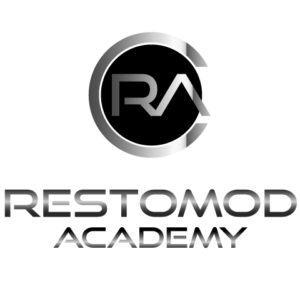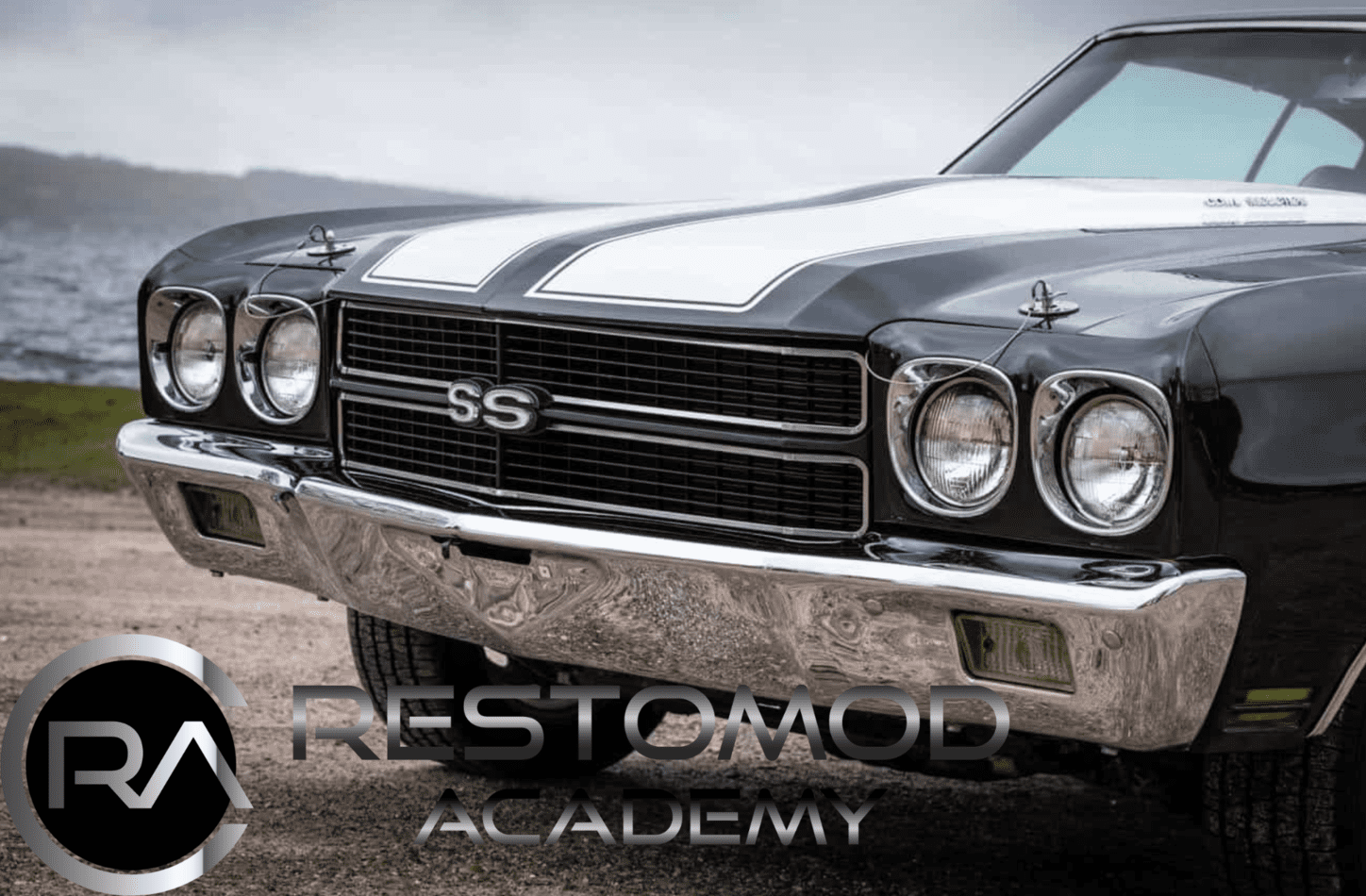When it was first introduced in the mid-1960s, the Chevrolet Chevelle was one of GM’s most versatile nameplates. By the time the second generation arrived, the Chevelle’s A-body platform had given birth to sedans. In addition, coupes, wagons, the El Camino trucklet, and convertibles, and would go on. In fact, they serve as the foundation for the personal luxury Monte Carlo coupe a few years later. The Buyers Guide for 1968–72 Chevelle SS focuses on Chevelles.
The 1968–72 contingent was the most appealing sequence of Chevelles ever built in terms of performance. It includes the renowned SS 396 and LS6 SS 454, which ended GM’s big-block era. It’s a fantastic choice for a street rod, a low-cost cruiser, or a specialized drag platform.
Variety of Chevelles
Because there are so many Chevelle models, pricing for the second-generation car is all over the place. A Concours-level 1968 300 with a V-8 is still about $25,000, while a 1972 SS 454 convertible is above six figures for Concours-quality restorations and show cars. This guide focuses on solid, original SS cars that cost $50,000 or more.
How do you find the right Chevelle, at the right price, without getting burned? We sought advice from two prominent A-body players, Roger Ausley of Ausley’s Chevelle and Jeff Lilly of Jeff Lilly Restorations.
VIN is unlikely to be of assistance.
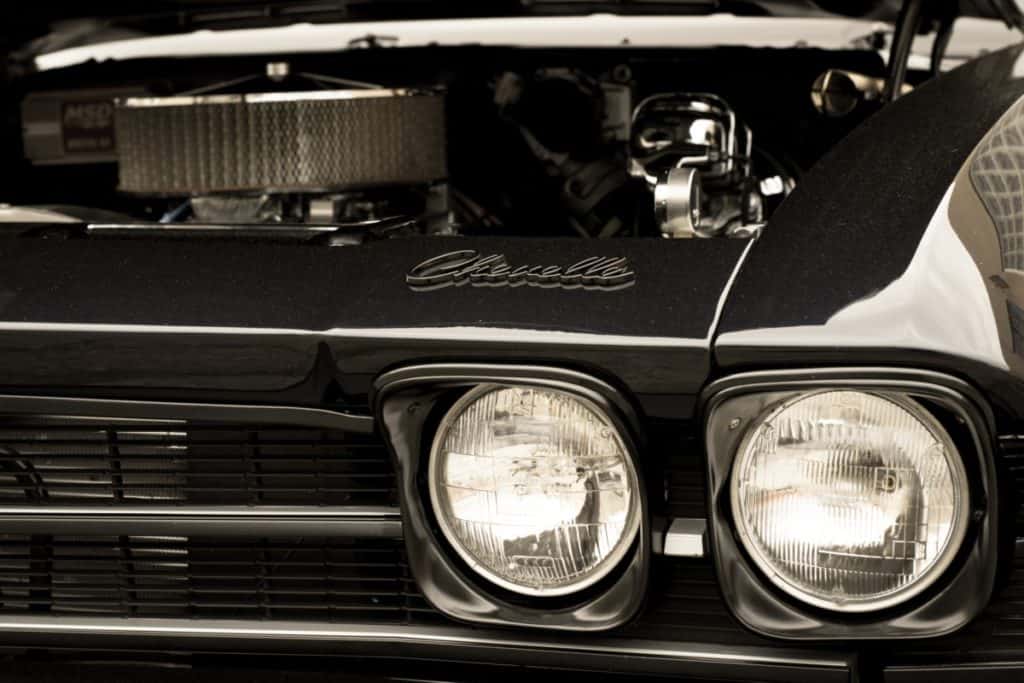
The Chevelle was GM’s cash cow. For example, 2.4 million two-door sedans, coupes, hardtops, convertibles, and wagons got produced between 1968 and 1972. So, Buyers Guide for 1968–72 Chevelle SS takes advantage of this fact.
That’s an astounding number of vehicles, and each comes with a bewildering array of trim levels. We’re intrigued by the SS. And, it’s limited to two-door coupes, hardtops, and convertibles. The El Camino and Monte Carlo, both of which are part of the Chevelle family, were also available in SS trim.
How Many Were Built?
192,000 SSs were made, or 8% of all cars. These vehicles are also categorized as: There were 86,307 Z25 SS cars made in 1969, 62,785 SuperSport versions between 1971 and 1972, 23,568 SS 454s (4475 were LS6 models), 53,599 SS 396s, and 44,239 Z15 package vehicles between 1971 and 1972.(1968, also known as the SS 396).
From 1969 to 1972, choosing the SS option on a Chevelle required the Malibu trim level (or the Custom trim El Camino). ’68 models expanded availability to 300 Deluxe and sport coupe cars, while ’67 marketed as its own Super Sport line.
The Yenko
Don Yenko’s Pennsylvania dealership sold 358 Yenkos in 1969.
The VIN tag, which during 1968–1971 is on the driver’s side dashboard and visible through the windshield, is usually insufficient to identify an SS model. The 13-character code begins with a 1, then has two numbers for the vehicle’s series, two more for its body style, a sixth character for the production year (8, 9, 0, 1, or 2), a seventh character for the vehicle’s factory, and a six-digit serial number.
Challenges Abound – Buyers Guide for 1968–72 Chevelle SS
What is the problem? 1968 Super Sport vehicles had their own line. In fact, the line was designated by a 38 in the VIN. However, the 1969-1971 SS production was introduced as a package and isn’t denoted by a 38.
It would be an understatement to suggest that the Chevrolet Chevelle was a money maker for General Motors. Two-door sedans, coupes, hardtops, convertibles, and wagons numbered 2.4 million between 1968 and 1972. In addition, four-door sedans and wagons.
That’s an astounding number of vehicles, and each comes with a bewildering array of trim levels. The SS, which is only available in two-door coupes, hardtops, and convertibles, intrigues us. The El Camino and Monte Carlo, both of which are part of the Chevelle family, were also available in SS trim.
VIN Layout
The VIN layout has changed for 1972, including one that will be useful to SS hunters. The first character is still a 1 and the series is defined by a letter (C, D, or H for SS models). Moreover, the next two numbers identify body style. W indicates a 454-cubic-inch engine, which was only available with the SS option package. The VIN format follows prior model years.
So, how do you document a genuine SS car from 1969–71? The process begins with a comparison of the vehicle’s equipment, features, and appearance to the Fisher Body Plate number, which is located in the engine bay on the driver’s side of the firewall.
Matching paint codes and model years can be a useful indicator at times. The Fisher tag’s upper left corner shows the manufacture year, and the paint code is beneath the six-digit unit number. The left two-digit number represents the lower body color, and the right two-digit number represents the upper body color. The SS was available in 1969 with two distinct paint codes: 72 (Monaco Orange) and 73 (Daytona Yellow), and seeing these on the tag can indicate you’re looking at an authentic car.
After 1970
Unfortunately, everything falls apart after 1970. With one exception: cars built in Oshawa, Ontario, had the RPO code (Z15, Z25, etc) associated with the SS package on the Fisher tag.
Roger Ausley reports a 1970 Malibu could be ordered with a big block, bucket seats, a 12-bolt rear end, and F41 suspension. “If someone takes a fully-equipped Malibu and adds the appropriate hood and emblems, you can’t tell unless you look at the side trim and holes.” Important paperwork. Even with a matching-numbers big-block, it may be a clone.”
Bring in a Chevrolet expert to validate the car’s identity or seek a paper trail from the vendor if you suspect a fake.
“There’s a big difference between the value of a clone and the value of an original car,” Ausley says. It has become so bad that people are now copying documents. However, you still need the paperwork to command the high dollars.
Buyers Guide for 1968–72 Chevelle SS – What is the distinction between SS models?
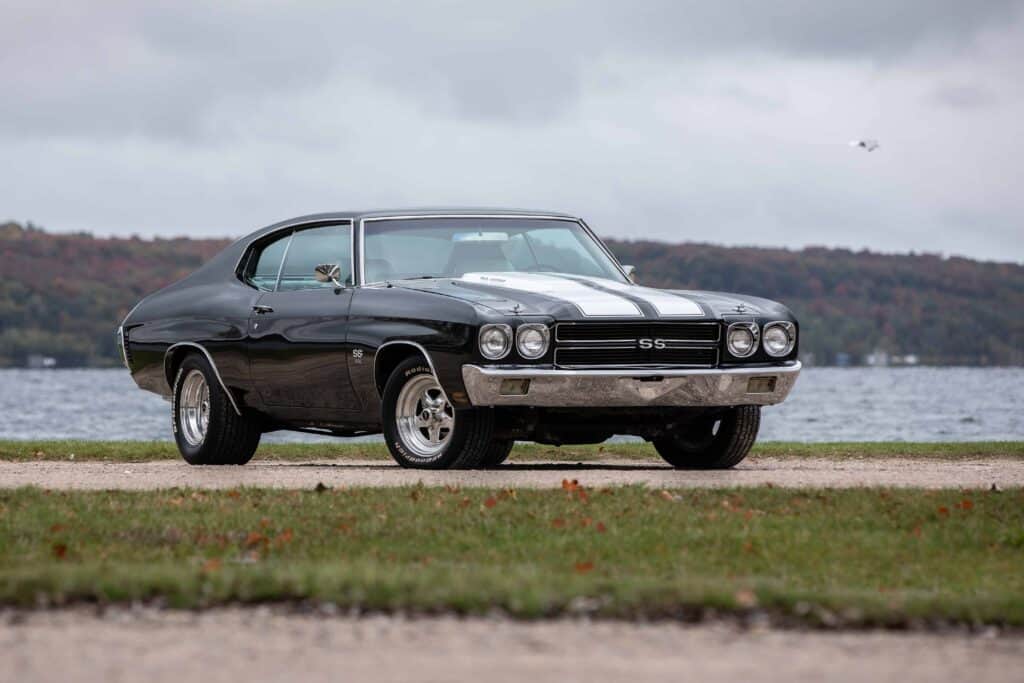
Every year, the Chevelle SS was the fastest mid-size Chevrolet available, and it was a formula that evolved over time.
1968 SuperSport (SS 396) models had 396-cubic-inch engines with 325, 350, and 375 horsepower. Every car received unique badging, two air induction inlets on the hood, a blacked-out grille, and a black lower body. Bucket seats, instrument packages, D96 stripes, disc brakes, positraction, a four-speed manual and a three-speed automatic were SuperSport options. It had a three-speed manual transmission, an open rear diff, and a bench seat as standard equipment.
In 1969, Chevrolet debuted a horizontal bar in the grille, square taillights, and a new ordering method. You had to request the Z25 SS 396 package to turn your Chevelle or Malibu into a muscular street machine. The interior furnishings and engine choices are identical to those of 1968, but the lower body is no longer black, and the front parking lights now have dazzling chrome trim. In addition, rear boxed control arms were added, as was a sway bar.
Designation Causes Cofusion
While the SS 396 name was retained, the base L34 engine was bored out to 402 cubic inches. It still produced 350 horsepower, compared to the L78’s 375 horses.
The addition of the Z15 order code on top of the Z25 added another SS wrinkle. Choosing the lower number resulted in a larger engine—454 cubic inches, good for 360 hp and mated to either a four-speed Muncie manual or a three-speed automatic (added cost options on top of the Z15 package). You could also get the LS6, which was a 450-hp version of the 454 with 500 lb-ft of torque. It cost half of what the Z15 package did (roughly $750 total).
Buyers Guide for 1968–72 Chevelle SS – What is the SS Badge?
Chevrolet would shake up what the SS badge meant for the car, in addition to the radical styling changes introduced for 1971 (with the entire Chevelle family adopting a much more square look). 396 and 454 LS6 were removed from the order sheet of Z15 SS Equipment. It was a cosmetic package for any V-8 engine save the regular 307-cuin unit.
A 300-hp, 402-cu-in engine, two 350 V-8s (245 and 270 hp), and a 365-hp LS5 454 were among them. The latter was only available in SS trim and required Z15. The trend would continue in 1972, bringing Chevelle’s second generation to an end.
“Mechanically, I can’t think of anything wrong with any of these drivetrains, other than the fact that all old cars leak oil,” Ausley laughs. “Gaskets and engine sealing were not exact sciences at the time.” If the car hasn’t been raced, it’s fine.
Where are they rusting?
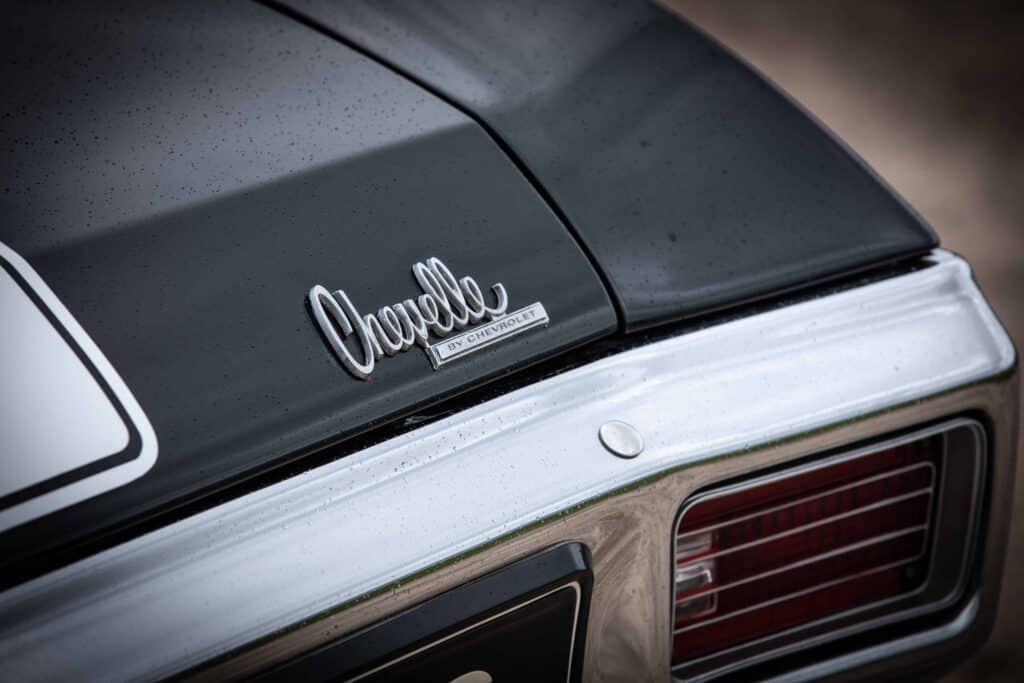
Rust is an issue for the A-body, as it is for any car approaching its sixth decade in a world of rain and road salt.
“Most of these cars, particularly the vinyl top models, tend to hold moisture and then rust,” says Jeff Lilly. “The bottom of the back window rusts and leaks into the trunk, rotting out the speaker deck in the process.” When people see water in the trunk, they assume it came in through the lid, but it actually came in through the back window. To replace it, you must remove the quarter panels, which is a lengthy process. Some people just patch it up, and when you buy the car, you can’t tell.”
“You should also inspect the bottoms of the fenders, door corners, and behind the rear wheel,” Ausley adds. Salt quickly deteriorates a northern car’s bottom and flooring.
Remember that rust in one area, such as the rear glass issue mentioned above, can sometimes necessitate a more involved repair process than its location suggests.
Inner Rockers
“Pay special attention to the inner rockers, especially if it’s a convertible,” Lilly advises. “The backside of those is where the floor braces and frame are attached. To replace the inner rocker, you must remove all braces and redo the entire floor.”
Almost every Chevelle SS component is being replicated, including sheet metal. Dynacorn, for example, now builds an entire 1970 body, which means 1970–72 parts are readily available. Lilly advises that decent replica steel is hard to locate. Imported panels must be trimmed.
“People are restoring rougher cars than they used to, so we’re selling a lot more sheet metal these days,” Ausley explains. “The good cars are all gone.” A buyer can request $7000 to immediately begin restoration.
Which is the best SS?
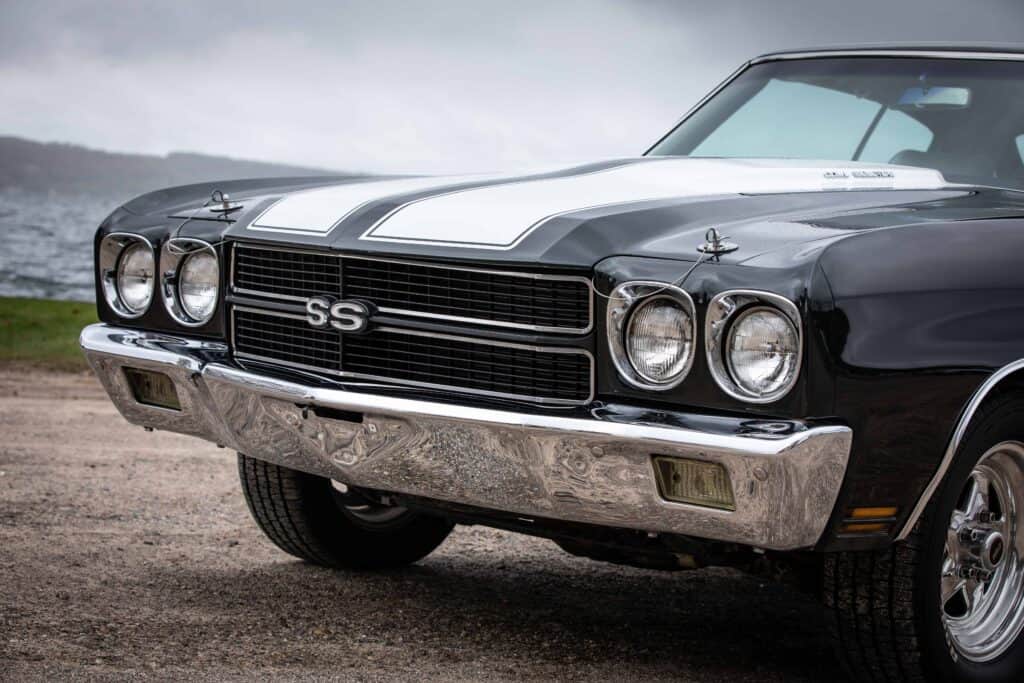
There are plenty of Chevelle SS examples for sale, but there are a few things to consider when deciding which year and engine combination is best for you. What was the first? Very few of these vehicles are still original. And, strategically developed and adjusted over 50 years.
“At this point, almost none of these cars are stock,” Lilly says. “Even the 396/375 car I bought from the original owner in 1991 had undergone numerous changes over the years.” In fact, you have to sift through all of the things that have been done to them to see what has been handled correctly. And, what has been botched. Far too many people skip a pre-purchase inspection, which will catch not only these types of issues but also corrosion issues that are common in cars. Before becoming involved, get as much information as possible. And, with a specific vehicle.”
The popularity of specific model years comes next. Don’t chase unicorns, says Ausley, citing the LS6 and 375-hp 402 automobiles.
What About Value?
“In terms of value, the 363 or 454 cars from 1970 are the best to buy,” he says. “The ’69 and ’71 years are the next most sought after in the second generation.” The ’72s, along with the ’68s, are probably at the bottom of the list, making them the ones to aim for if you’re on a tighter budget.”
Although some features, engines, and body styles are uncommon. Ausley uses the LS6 and 375-hp 402 automobiles as examples—don’t chase unicorns.
“There’s no official count on the variants, and even some of the body style counts are difficult to verify,” he says. “Be wary of anyone who claims their vehicle is ‘1 of X,’ because I’ve run into similar claims that don’t match what we’ve registered in the Chevelle SS clubs I’m a part of time and time again.”
Forewarning
There are numerous fine examples of these historic GM A-bodies available, as well as a large supporting community both before and after you make your final decision. Good luck in your search for the Chevelle of your dreams.
